In my desultory survey of style books — conducted in the rather anemic fashion/style section of Politics & Prose — I have observed that most writers sketch out the basics of a minimal wardrobe that is supposed to see one through . . . what exactly, I don’t know. The size of one’s wardrobe depends on the range of dress needed to meet one’s obligations and the changeability of one’s climate. So, the demands upon (and corresponding needs of) a person who works in an office environment in Washington, D.C. (a four season climate) are going to be different (and bigger) than a person who works in a strictly casual environment in San Diego — right?
Do readers really want to know how large their wardrobes should be (or, how small they can be) and what they should contain? Do any of you? I can think of think of two reasons why you might.
- A woman who is starting from scratch might want to build a wardrobe very deliberately; guidelines can be very helpful in starting a project like that.
- A woman who has too much clothing might want to simplify her wardrobe (and by extension, her life) by getting rid of clothes; knowing that there is a safe stopping point may encourage this process to proceed more confidently.
So this post is for you, as well as any readers whose interest is piqued at the prospect of a theoretical exercise.
Talking about a whole calendar year seems a little overwhelming, but I feel comfortable opining on how much clothing one really needs to get through a season. Here is my theory: If you have enough clothing to get through a month wearing a different outfit each day — which is really just 20 days and each outfit does not need to be radically distinct — I think you have a smart, minimal wardrobe that will last a season. For me (committed to jackets, suspicious of skirts), that minimal wardrobe would be composed of:
- 3 serious (i.e., wool, velvet, fine-wale corduroy or polished cotton) jackets: one black, one grey and one cream; you could substitute a color for the grey or the cream — I like gold/yellow
- 1 casual (i.e., canvas or ponte) jacket in a neutral color (black, brown, khaki, navy, loden)
- 2 white blouses
- 2 black blouses
- 2 printed blouses
- 4 pairs pants (black, grey, a medium brown with grey undertones, and khakis)
- 4 jerseys or knit tops
- 4 sweaters (certainly one black, but also some color here)
- 3 dresses
- 4 pairs of shoes: a low but dressy heel, a ballerina flat, a pair of penny loafers, and a pair of Mary Janes, brogues or oxfords
- 1 pair of boots
- 1 pair of jeans
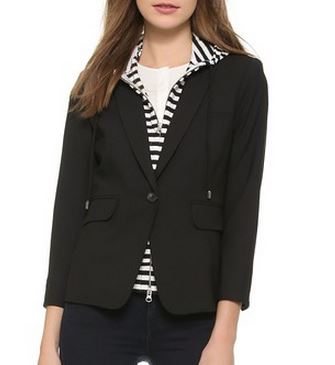
And then this last one, which is prohibitively expensive, but so beautiful that I think we should all enjoy looking at it for a minute
Does that seem like a lot? (If you just said “yes”– please go look in your closet, come back, and answer the question again.) It’s not a lot. But this inventory could produce a lot of outfits. The engineers among you have probably already calculated all of the permutations, but for those in the humanities, I’ll provide some rough numbers. The black jacket will probably work with all 4 pairs of pants and the other jackets will go with at least two pairs of pants: 8 outfits right there. If two of the sweaters are substantial enough to be worn in lieu of a jacket and go with 2 pairs of pants each — that’s 4 more outfits. Added to the dresses, that’s 15 outfits, and you aren’t even taxing your brain yet by layering blouses, tops, and sweaters.
If you were to add 1 more jacket (a color), 2 more printed blouses, 2 more sweaters, and a pair of bright colored flats to this mix, your closet would be more fun than a barrel of monkeys.

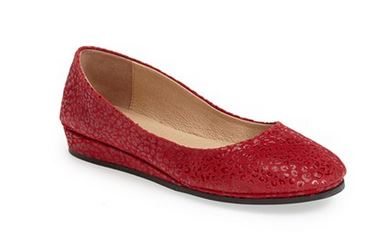
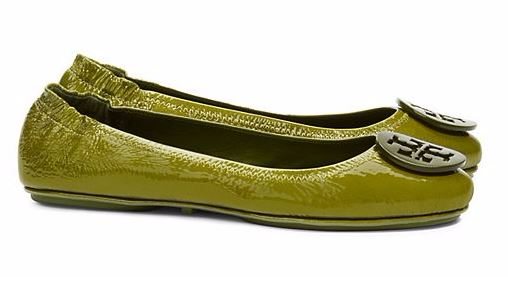
You could double the inventory proposed above and you would have an extraordinary number of options, and yet everything would fit into one modestly sized closet. You would however, need to leave space for the other seasons . . .
I’ve seen a number of articles recently trumpeting the brilliance of adopting a uniform and then wearing the same thing to work every day. How tiresome. I can sort of understand that this mode of dress may be a coping mechanism for people who work in the fashion industry, if they spend all of their workdays thinking about clothes and therefore don’t want to spend their leisure time thinking about clothes, too. [Nota bene: Just after I finished college, I worked in a bakery for a few months; I ate everything in sight and never lost my taste for pastries.] I also think the approach is totally legitimate for people who don’t care about clothes; I commend them for finding one flattering and replicable look and then devoting their energy to things that they care about, which may be (but as likely are not) more weighty than clothes. But we (that’s you and I) like clothes . . . so no uniform for us!

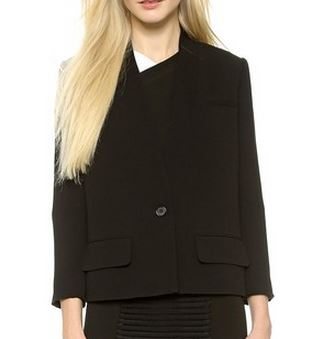

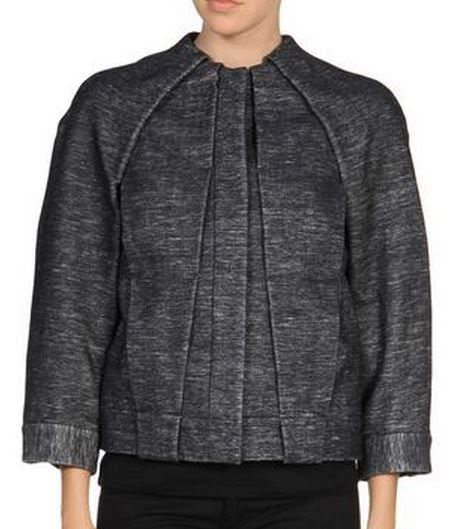
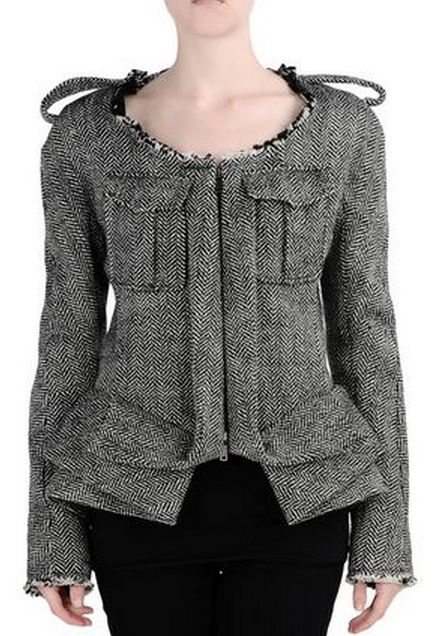
I like the way you put it: small but smart. I’ve always aspired to a smart wardrobe more than a small one, but have become a fan of having fewer items. What happened was I lost a lot of weight and had to buy new clothes. Well, one can’t buy everything all at once, so one buys curated items one loves so much she must — simply must — have them. Which is how I ended up with a much more compact wardrobe that’s pretty close to what you list above. And yes, that jacket is adorable! Not something I can wear, but if you have it, please do model it for us!
Hi Linda — The great thing about a smaller wardrobe is there is simply less to maintain, right? I should have disclosed that I, personally, do not have a small wardrobe — but the thought of having less is very appealing. Perhaps some day I will radically downsize — and the giveaways will be prizes to the people who’ve posted the largest numbers of comments on The Directrice!
I started pondering the question of how large a wardrobe should be/how small a wardrobe could be because I was interested in developing a more functional wardrobe. Wardrobe function is basically the product of *how many* clothes and *which* clothes, so the question of wardrobe size seemed like a good starting point from which I could then drill down into what the components of that wardrobe should be. Though I didn’t necessarily start out thinking that I had either too many or too few clothes (spoiler alert: I had too many clothes).
After playing a bit with different systems for capsule wardrobes and minimal wardrobes, I’ve come to think that these ideas offer a level of abstraction that makes it easier to pick out the functional components of a wardrobe. That is, reduce a wardrobe to the bare minimum and you start to be able to see what different items of clothing are *doing* for you. Which can then be translated back to inform a not-so-minimal wardrobe, if that’s what you want (it is for me). So I think that’s a third reason to be interested in this “how many” question.
Where I run into trouble with the capsule approach tends to be with the temptation to maximize the mix-and-match potential of the wardrobe by leaning heavily on neutrals. I like lots of color and pattern in my outfits, so building a capsule of mostly neutrals yields lots of potential outfits, but few I actually want to wear or that feel “like me.” (I have made this mistake packing for vacations before!) To remedy this I have arrived at the rule of thumb that each category of clothing (i.e., pants, tops, sweaters, skirts/dresses) should include at least one example of the following: dark neutral, light neutral, dark color, light color. It’s a working hypothesis, anyway. I think that a print item in your color palette of the season in each of several categories (top, bottom, topper) can also add a lot of feeling of variety.
I think the number of tops/bottoms/toppers in your suggested minimal wardrobe is good. From a psychological perspective, I think it helps to have more items in each of these categories than days in your week, to avoid feeling like you are just drearily rotating through the same items week in and week out.
Sorry for the monster comment, clearly I have Theories About All This!
Sarah — I love the monster comment! Thank you for taking the time to share your ideas. I totally agree that even small wardrobes need color, which I like to bring in with blouses and sweaters. It can be helpful to identify two or three colors (rather than all the colors) if one is trying to buy clothes that can relate to one another; for me, those would be yellows and greens. When I go on vacation, I pack a capsule wardrobe: typically, 3 jackets, 3 printed blouses/tops, 1 white blouse, 3 tee-shirts, and several pairs of pants. I bring my favorites, but by the end of two weeks, I am so tired of them — so I also agree that one needs enough stuff to extend further than a fortnight.
A careful build up of a wardrobe makes for a big number of well co ordinated outfits with no much stress involved. It’s practical but also creative. I could do the uniform project but as an experiment for a while. Very nicely written post.
Directrice, when the time comes for you to leave the practice of law and pursue your next business venture, I would love to see you become available for “closet and alteration consultations.” I envision you teaming up with Fatima the Wonder Seamstress, going through our closets, selecting worthwhile items to keep as-is, and identifying items worth keeping if altered. For a special fee, you could accompany the client to her alterations appointment with Fatima. I am happy to be your guinea pig 🙂
Now that I know there might be giveaways I’ll start commenting more – especially since the Directrice and I are about the same size! I’ve never commented on the few other blogs I read, but the Directrice has inspired me. I admire that you have the time to blog given your high-pressure job. Between my job, the traveling required by the job, and a having preschooler, just finding a few minutes to comment coherently – and with proper grammar and spelling – is hard. I’m actually stealing a few quiet moments today while I sit in an airport.
But onto the subject at hand: My wardrobe is small because I’ve put it together mostly from scratch over the last two years. When I started, I did find these types of lists very useful. I’m still building up the jackets category. I’ve also found skirts too tricky and so only have one. The main thing I’ve done – at first unintentionally – is to limit my clothing color palate to black, white (of all shades), blue (mostly navy) and a bit of grey. Once I realized that I’d been limiting my color palate it made a lot of sense to me: I have lots of combinations, fewer clothes is easier on the environment, and most importantly it’s easier on my brain. On a day-to-day basis, I have so many things of which to keep track that I love being able to walk into my closet and quickly put together an outfit. As others have pointed out, a limited color palate can be boring, so I’ve added a few colored scarves. Maybe someday – but unlikely to be anytime soon – I’ll be able to expand my thinking to more colors.
Thank you for all the inspiration. I’m planning on going back to comment on a couple of the recent posts that have been helpful to me.
Hi Rhizophora — I am impressed that you find time to keep up with any pleasure reading while working, traveling, and keeping up with a preschooler! I am honored to be part of your day.
I’ve recently seen several friends and friendquaintances KonMari their lives to various degrees, and I fancifully imagine myself as a stranger with the ability to aggressively cull down her wardrobe. My husband and I are in the midst of hunting for a dwelling closer to our commutes, so every few days, I try to be that stranger for a few minutes: I happily, ruthlessly fold clothing I haven’t worn, or don’t like to style, into a donation box. I’ve barely made a dent.
Lists like yours are useful when either trying to build up a basic wardrobe, or to pare down from an overabundance of (in my case, cheap) filler pieces. I’d argue, though, in favor of the “uniform” as a theme/concept rather than a concrete practice. In this era of exploring ego depletion (“decision fatigue”), there’s something satisfying about not necessarily putting on the same thing daily, but knowing that your wardrobe serves your needs, and doesn’t need much cajoling to work together. Mind you, my office is entirely casual, so I rely heavily on knit/ponte blazers, cardigans, jersey knit tops, and pants. Skirts and dresses are a rarity only because I disenjoy dealing with foundational garments, but am not comfortable wearing a dress without them. A goodly portion of my wardrobe IS black or dark grey, but not so much that anyone comments when I wear bright colors. To my mind, having a so-called uniform is more about committing to a general aesthetic than it is about wearing variations on the exact same theme daily — and that aesthetic can be something as vague as ‘un-fussy/reasonably modest/[often] dark neutrals with an optional pop of color.’ There’s a world of variety within that framework!